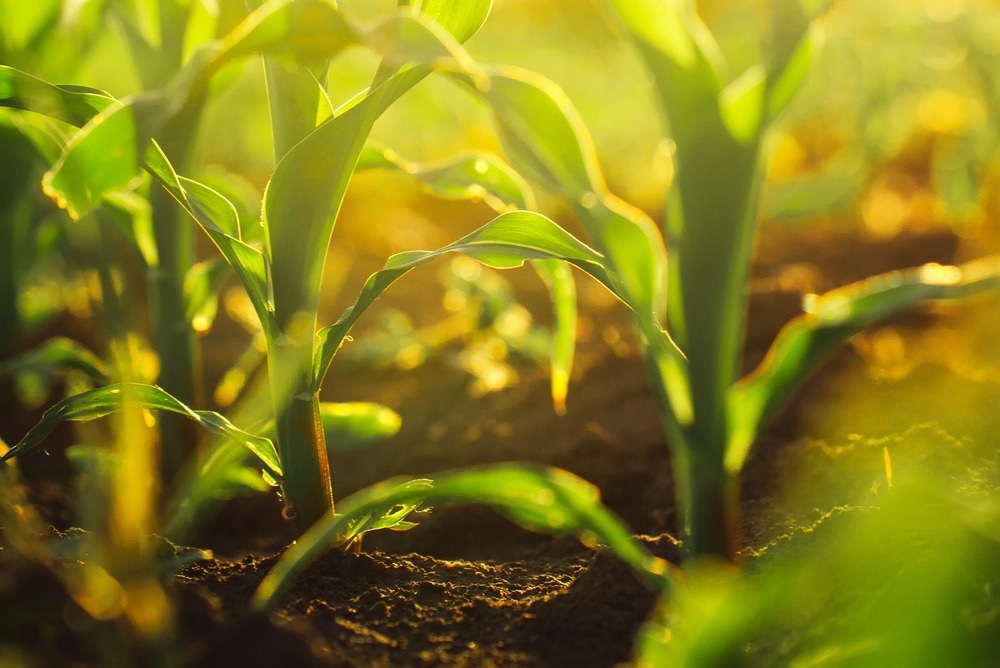There is an increasing focus on using carbon-based nanomaterials for agricultural applications. While carbon nanomaterials play an important role in plant growth, there is great uncertainty around the impact of carbon nanoparticle dosages on the physiological processes of plants.

Study: Preparation and application of nanostructured carbon from oil fly ash for growth promotion and improvement of agricultural crops with different doses. Image Credit: Bits And Splits/Shutterstock.com
The purpose of a study published in the journal Scientific Reports was to analyze the response of Cicer arietinum L. and Phaseolus vulgaris L. plants to nanostructured carbon generated from oil fly ash.
A novel approach of using high-energy ball-milling and then sonication was used to produce the nanostructured carbon from oil fly ash.
Environmental Implications of Carbon Nanomaterials
With the ever-increasing application of carbon nanomaterials in various fields, these nanomaterials will inevitably be released into the environment over their life spans.
The widespread and unregulated use of nanoparticles has prompted scientists to investigate their environmental influence's issues, difficulties, and repercussions.
Nanoparticles show poor movement capability inside the soil. So, nanoparticles that enter the ground by agricultural application, rain erosion, atmospheric deposition, or other routes could accumulate over time.
Plants are the cornerstone of every ecosystem and serve key roles in the dispersion and transportation of carbon nanoparticles via uptake and bioaccumulation through the food chain. These nanoparticles may have detrimental effects on different parts of the ecosystem.
Conversely, carbon nanoparticles may contribute significantly towards pollutant removal and soil remediation. Carbon nanoparticles may improve plants' growth and physiological processes by boosting growth, protein content, and concentration of photosynthetic pigments.
To offset the negative impacts of carbon nanoparticles, enzymatic and nonenzymatic antioxidants and other substances can be beneficial for protecting plants from the detrimental effects of free radicals.
Approaches for Oil Fly Ash Engineering
Its particle sizes and architecture influence the applications of nanostructured carbon. High-energy ball milling has emerged as a viable approach for producing nanocrystalline powders from nanomaterials.
Recent research has documented the effective fabrication of nanostructured carbon from oil fly ash waste using high-energy ball-milling processes.
The carbon nanostructures that were obtained from oil fly ash exhibit promising characteristics, including high graphitic content, large specific areas, nontoxicity, high porosity, and strength.
An innovative technique for improving the morphological qualities may be to follow up high-energy ball-milling with sonication for producing carbon nanostructures from oil fly ash.
The method may provide novel oil fly ash engineering opportunities, enabling green, sustainable manufacturing processes using industrial waste. The use of oil fly ash and engineered carbon nanostructures may open unexplored avenues for agricultural applications and should be extensively explored.
Research Methodology
Cicer arietinum L. and Phaseolus vulgaris L. are commercially important crops cultivated worldwide. These plants were selected as the test crops to explore the impacts of carbon-based nanostructures in oil fly ash doses because of their capacity to adapt to various environmental settings.
Using morphological and physiological parameters, the research team investigated the interactions among the crops and samples of nanostructured carbon obtained from oil fly ash using high-energy ball-milling followed by sonication.
Several criteria were used to study the effect of the accumulated nanostructured carbon derived from oil fly ash on physiological and morphological characteristics, including plant growth and photosynthetic pigments.
This study presented a novel approach for manufacturing synthetic carbon nanoparticles using oil fly ash. The maximum allowable content of manufactured carbon nanoparticles in crops may be determined, enabling the emergence of innovative biotechnological techniques for the development of crops.
Findings of the Study
The effects of the nanostructured carbon derived from oil fly ash on plants varied depending on the morphological makeup of the oil fly ash-based carbon nanostructures, their dosage, and the manner of administration.
Nanostructured carbon obtained from oil fly ash using ball-milled sonication in water at a 4 mg L-1 concentration was the optimal dosage for enhancing the growth of seedlings in C. arietinum and P. vulgaris.
Improvements in the rate of germination, photosynthetic pigment content, leaf area, and antioxidant enzymatic activity observed in the seedlings of C. arietinum and P. vulgaris treated with oil fly ash-based nanostructured carbon were significant.
Nanostructured carbon obtained from oil fly ash may prove to be a superior nanoscale fertilizer to traditional fertilizers and manure, as this study demonstrated increased plant development and enhanced stress tolerance.
Reference
Alluqmani, S. M., & Alabdallah, N. M. (2022). Preparation and application of nanostructured carbon from oil fly ash for growth promotion and improvement of agricultural crops with different doses. Scientific Reports, 12. Available at: https://www.nature.com/articles/s41598-022-21639-w
Disclaimer: The views expressed here are those of the author expressed in their private capacity and do not necessarily represent the views of AZoM.com Limited T/A AZoNetwork the owner and operator of this website. This disclaimer forms part of the Terms and conditions of use of this website.